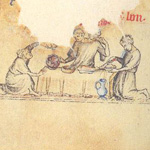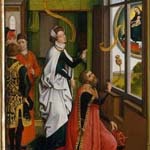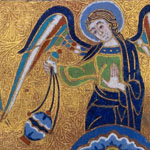Butcher’s Broom
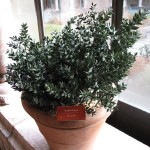 |
 |
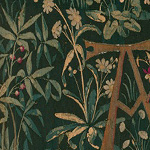 |
Above, from left: Butcher???s broom growing in a pot indoors in Cuxa Cloister; detail of the stiff, sharp “leaves,” which are actually modified stems; detail from the tapestry The Hunters Enter the Woods showing Butcher’s broom.
An odd-looking little shrub, Butcher???s broom (Ruscus aculeatus), which reaches a height between one and a half and two feet for us here at The Cloisters, was also known as knee-holly, because of its short stature and prickly nature. (Another old name is “pettygree” or “pettygrew.”) Usually included in the very large lily family, butcher???s broom is a botanical curiosity as well as a household and medicinal plant with a long history of use. Read more »

